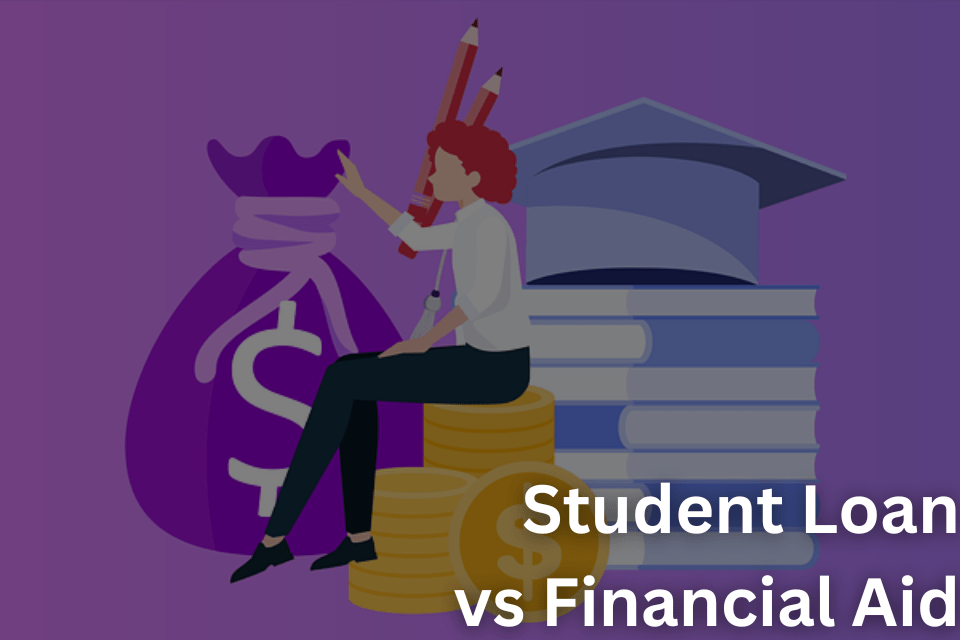When it comes to paying for college, students and their families have a lot of options to consider. Two of the most popular options are student loans and financial aid. While both can help cover the cost of college, they are very different and have different implications for the borrower. In this article, we will explain the differences between student loans and financial aid, and help you understand which option might be best for you.
What is Financial Aid?
Financial aid is money that is provided to help students pay for college. It can come from a variety of sources, including the federal government, state governments, colleges and universities, and private organizations. Financial aid can take many forms, including grants, scholarships, and work-study programs.
Grants and scholarships are forms of financial aid that do not have to be repaid. They are typically awarded based on financial need, academic achievement, or other criteria. Work-study programs, on the other hand, provide students with on-campus jobs to help pay for college expenses.
What is a Student Loan?
A student loan is money that is borrowed to help pay for college. Unlike financial aid, student loans must be repaid, usually with interest. There are two main types of student loans: federal student loans and private student loans.
Federal student loans are provided by the government and have fixed interest rates. They also have more flexible repayment options, including income-driven repayment plans. Private student loans, on the other hand, are provided by banks and other private lenders. They often have variable interest rates and may have less favorable repayment terms.
Pros and Cons of Financial Aid
The biggest advantage of financial aid is that it does not have to be repaid. Grants and scholarships are free money that can help cover the cost of college without creating any debt. Work-study programs can also be a great way to earn money while in college.
However, there are some downsides to financial aid. First, it can be difficult to get. Many scholarships and grants are highly competitive and are awarded based on specific criteria. Additionally, financial aid may not be enough to cover all of your college expenses, which means you may still need to take out student loans.
Pros and Cons of Student Loans
The biggest advantage of student loans is that they can help you pay for college when you don’t have enough money saved up or don’t qualify for financial aid. They are also relatively easy to get, as long as you have a good credit score.
However, there are some downsides to student loans. First, they must be repaid, usually with interest. This means that you will be paying back the loan for years after you graduate. Additionally, if you don’t make your payments on time, you could end up defaulting on the loan, which can have serious consequences.
How to Make the Right Choice
When it comes to paying for college, there is no one-size-fits-all solution. The best option for you will depend on your personal circumstances and the type of college you plan to attend.
If you have a good credit score, a student loan may be the best option for you. Federal student loans have more favorable terms than private student loans, so they are usually the better choice. If you don’t qualify for financial aid or have a low credit score, you may have to take out private student loans. However, it’s important to be aware of the potential downsides and make sure you understand the terms of the loan before borrowing.
If you do qualify for financial aid, it’s a good idea to take advantage of it as much as possible. Grants and scholarships can help you avoid borrowing altogether, and work-study programs can help you earn money while in school. However, keep in mind that financial aid may not be enough to cover all of your expenses, so you may still need to take out student loans.
Ultimately, the key to making the right choice is to do your research and understand the pros and cons of each option. Talk to financial aid counselors and financial advisors to help you understand the best options for your situation. And remember, the most important thing is to make a plan that will help you afford the cost of college without creating too much debt.
Conclusion
Paying for college can be a daunting task, but by understanding the differences between student loans and financial aid, you can make the best decision for your situation. Financial aid can be helpful to cover the cost without debt, but student loans can also be a great option if you have a good credit score. Ultimately, it’s important to do your research, understand the pros and cons of each option, and make a plan that will help you afford the cost of college without creating too much debt.

